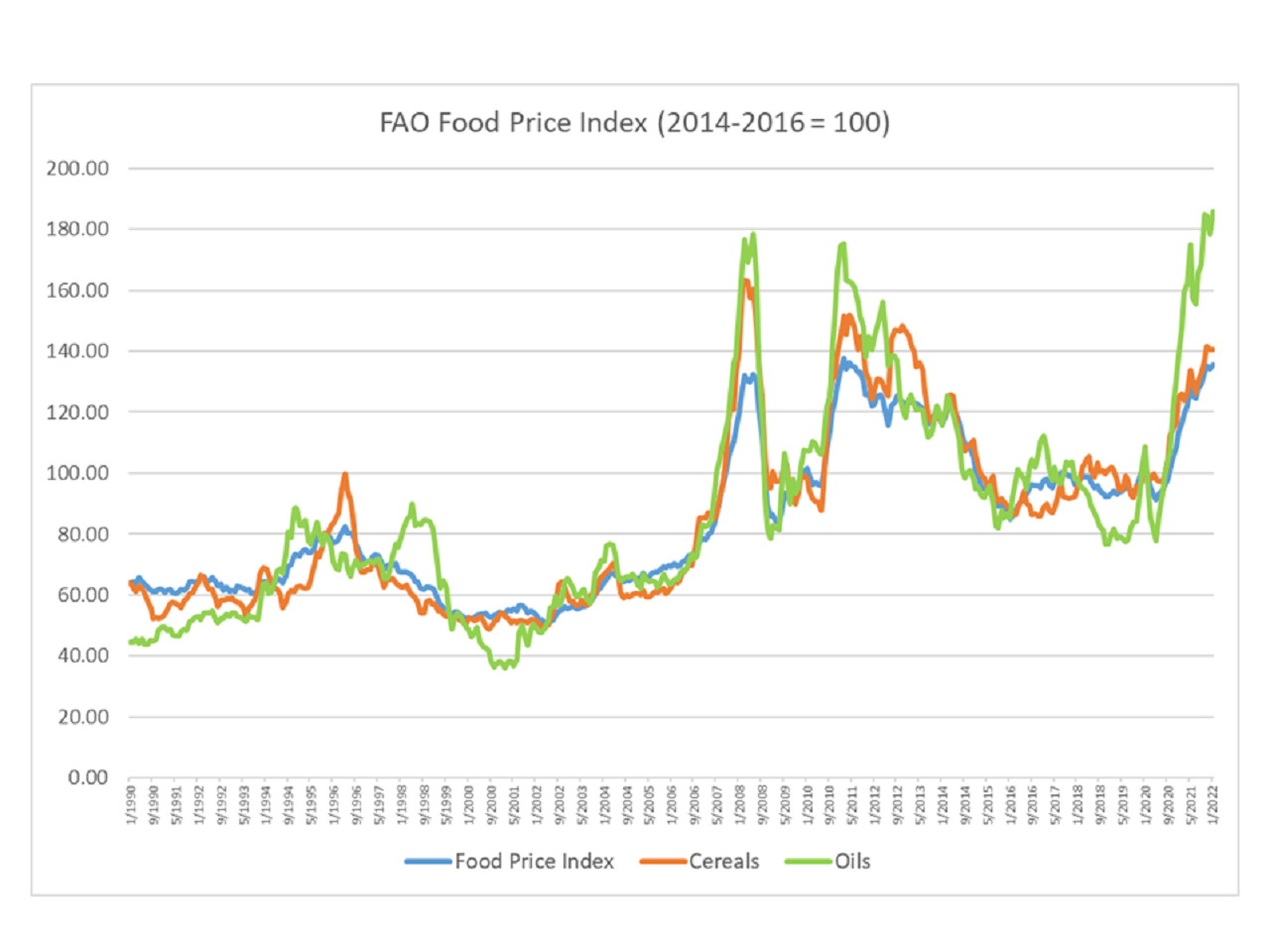Pick Up
472. Food Price Trends for January 2022

On February 3, 2022, the Food and Agriculture Organization of the United Nations (FAO) announced that the Food Price Index averaged 135.7 points in January, and increased by 1.5 points (1.1%) compared to December 2021. The increase appears to reflect a price spike mainly due to supply constraints in major vegetable oil producing countries.
The FAO Cereal Price Index increased just slightly (0.1 percent) to 140.6 points from the previous month of December 2021 (+12.5 percent on a year-over-year basis). World wheat prices fell 3.1% following bumper crops in Australia and Argentina, but strong demand has kept them down. In contrast, maize export prices rose by 3.8 percent from December triggered by drought concerns in South America. Rice prices also rose by 3.1% from the previous month due to low yield and steady demand by Asian buyers.
In contrast to grain prices, the FAO Vegetable Oils Price Index for January rose 7.4 points, or 4.2%, from the previous month to an all-time high of 185.9 points, reflecting higher prices for palm oil, soy oil, rapeseed oil, and sunflower oil. In particular, the price reflected a decline in exports due to a shortage of workers and bad weather in Indonesia, one of the largest palm oil producers, as well as concerns about supply constraints in major producing countries. Soybean prices also rose on the back of firm imports from India and other countries. Other vegetable oil prices are also on a general upward trend, partly due to the recent rise in crude oil prices.
The use of soybean and the expansion of its production area were introduced in yesterday's article. In addition to cooking oil, palm oil is used as a raw material for margarine, shortening and soap. It is said to have originated in Africa, but nowadays, Southeast Asia, including Indonesia and Malaysia, is the major producer. According to Our World in Data, oil palm yields 2.8 tons of oil per hectare, which is significantly higher than sunflower, rapeseed (0.7 tons) and soybean (0.45 tons). Palm oil has a high environmental and health impact. While palm oil is often discussed in the context of environmental impacts and health issues, the significance of sustaining existing palm oil production technologies while developing sustainable and efficient alternatives is significant.
Through joint research with private companies, JIRCAS is working to reduce the environmental impact of the palm oil production process, which is mainly produced in Southeast Asia, including Indonesia and Malaysia.
Contributor: IIYAMA Miyuki (Director, Information Program)
